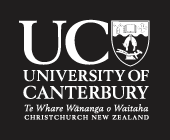About the Project
Short Project Description
During the last two decades, rigid internal fixation with micro-plates and screws has gained widespread acceptance in the correction of craniomaxillofacial deformities. However, studies have proposed that in many cases these metallic plates and screws require removal. A biodegradable plating system would eliminate problems associated with permanent devices, as stability is necessary only for a reasonably short period until the fracture segments have become fused. Biodegradable metals such as magnesium alloys have made available new designs of implantable orthopaedic devices, which gradually degrade in the human body. Nevertheless, an optimal design of biodegradable device does not exist yet, despite advances in designing and manufacturing with the use of traditional orthopaedic materials.
The aim of this PhD project is to investigate some novel mechanical designs of biodegradable metallic bone screws along with their different manufacturing techniques. The research will focus on improving treatment outcomes of bone fracture immobilisation in craniofacial orthopaedic applications by developing a resorbable metallic implant system. This work represents a paradigm shift in bone fixation, providing innovations that will lead to reducing patient recovery time, removing the need for secondary implant removal surgeries and enhanced osseosynthesis.
This PhD position requires strong mechanical engineering design and computational skills. The candidate should have a demonstrable interest in the development of medical devices.
Supervisory Team
A/Prof. Mark P. Staiger - Materials Engineering Group, Department of Mechanical Engineering, University of Canterbury, Christchurch, New Zealand
A/Prof. George Dias - Centre for Bioengineering and Nanomedicine, Department of Anatomy, Otago University, Dunedin, New Zealand
Dr. Bartosz Nowak - ORTHOMAG Research Group, Department of Mechanical Engineering, University of Canterbury, Christchurch, New Zealand
Our multi-disciplinary team includes two universities (University of Canterbury and University of Otago), an industrial partner, and a number of postgraduate students. Members of our team have international reputations in the field of magnesium biomaterials, regular contributions to the “Biometal” series of conferences, and extensive experience in all aspects of biodegradable metals.
Christchurch’s transformation into a vibrant and modern city is well under way, earning it a New York Times ranking of second best city to visit in the world in 2014. Our spacious, picturesque campus is set in the very heart of a city that has become a magnet for growth, innovation and entrepreneurship. This is a young person’s city, which is currently embracing change and creating a new identity. Make of this opportunity what you will; challenge the status quo, channel new ideas, and meet ’can-do’ people. Only 20 minutes’ drive from UC to the seaside, locals enjoy a selection of safe beaches for outdoor recreation all year round. There are a number of rivers and lakes for other water sports, including the picturesque Avon River which runs right through the city. You can take part in a range of activities on the Port Hills, one of the best-loved landscapes of Christchurch. The view from the Hills encompasses Banks Peninsula, Lyttelton Harbour, the city and Canterbury Plains, right across to the Southern Alps. Christchurch is only a short distance from some of New Zealand’s most spectacular locations for rock climbing, rafting, tramping, mountain biking, kayaking, horse riding, skiing and snowboarding. The University of Canterbury is located in the North West of Christchurch, just a 10 minute drive from the international airport. With a population of around 350,000, Christchurch is the largest city in the South Island and the second largest in New Zealand. Christchurch is an ethnically diverse city that offers students a vibrant, friendly, adventurous and welcoming place to call home.

 Continue with Facebook
Continue with Facebook

